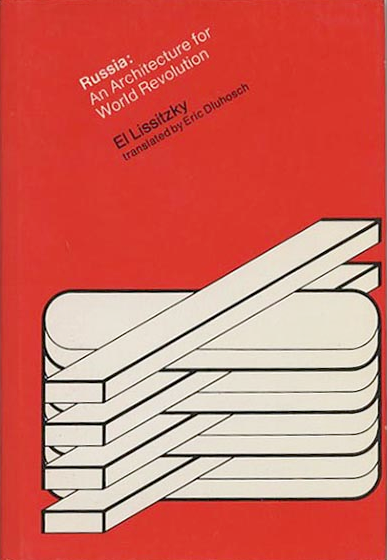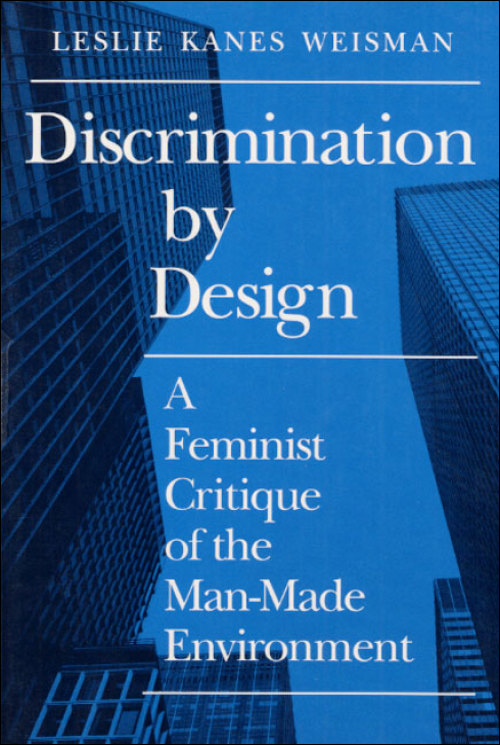El Lissitzky: Russia: An Architecture for World Revolution (1930–) [German, English]
Filed under book | Tags: · architecture, city, russia, soviet union, urban planning

” El Lissitzky ‘s book is a classic in architectural and planning theory, as well as an important document in social and intellectual history. It contains an appendix of excerpted writings by his contemporaries – M. J. Ginzburg, P. Martell, Bruno Taut, Ernst May, M. Ilyin, Wilm Stein, Martin Wagner, Hannes Meyer, Hans Schmidt, and others – all of whom illuminate the architecture and planning of Europe and Russia during the 1920s. There are over 100 plates and drawings.”
First published as Russland. Die Rekonstruktion der Architektur in der Sowjetunion, Anton Schroll, Vienna, 1930.
New edition
Edited by Ulrich Conrads with Dietrich Helms
Ullstein, Berlin, 1965
Ullstein Bauwelt Fundamente series, 14
206 pages
English edition
Translated by Eric Dluhosch
Publisher MIT Press, November 1970
ISBN 0262120348
239 pages
Reviews: Albert J. Schmidt (Slavic Review, 1971), E.B. (J European Studies, 1971).
Russland. Die Rekonstruktion der Architektur in der Sowjetunion (German, 1930/1965, 12 MB)
Russia: An Architecture for World Revolution (English, 1970, 24 MB)
The Funambulist by its Readers: Political Geographies from Chicago and Elsewhere (2019)
Filed under book | Tags: · architecture, chicago, city, geography, politics, space, urbanism

“Initiated in 2015 as a print and online magazine, The Funambulist does not understand architecture as the authored design of inhabitable sculptures, but rather as the discipline that organizes bodies in space. With such a perspective, we have attempted to detach ourselves from architecture as a discipline and have focused instead on formulating spatial approaches to anti-colonial, anti-racist, anti-capitalist, queer, trans, feminist, anti-ableist political struggles and that against which they fight.
For this book commissionned by the Chicago Architecture Biennial 2019, we have invited 20 regular readers (many of whom are also contributors) of The Funambulist to pick, among the many texts we published in our 22 first issues, the one that appeared to them as the most politically useful. We are republishing these texts here, as well as their introductions, written by these 20 guests.
In addition to this, we asked five Chicago-based activists to write about the spatial politics of their city in relation to settler colonialism, the municipality, the police, the real estate pressure, as well as the school system. At a crucial moment following the change of administration, this appeared to us as the most politically useful thing we could do to propagate the voices of those active on the ground.”
Edited by Léopold Lambert, et al.
Publisher The Funambulist, Paris, Sep 2019
Open access
ISBN 9782956935803
234 pages
PDF (34 MB)
Comment (0)Leslie Kanes Weisman: Discrimination by Design: A Feminist Critique of the Man-Made Environment (1992)
Filed under book | Tags: · architecture, city, feminism, home, public space, universal design, urban planning, women

“Discrimination by Design is a fascinating account of the complex social processes and power struggles involved in building and controlling space. Leslie Kanes Weisman offers a new framework for understanding the spatial dimensions of gender and race as well as class. She traces the social and architectural histories of the skyscraper, maternity hospital, department store, shopping mall, nuclear family dream house, and public housing high rise. Her vivid prose is based on exhaustive research and documents how each setting, along with public parks and streets, embodies and transmits the privileges and penalties of social caste.
In presenting feminist themes from a spatial perspective, Weisman raises many new and important questions. When do women feel unsafe in cities, and why? Why do so many homeless people prefer to sleep on the streets rather than in city-run shelters? Why does the current housing crisis pose a greater threat to women than to men? How would dwellings, communities, and public buildings look if they were designed to foster relationships of equality and environmental wholeness? And how can we begin to imagine such a radically different landscape?
In exploring the answers, the author introduces us to the people, policies, architectural innovations, and ideologies working today to shape a future in which all people matter. Richly illustrated with photographs and drawings, Discrimination by Design is an invaluable and pioneering contribution to our understanding of the issues of our time–health care for the elderly and people with AIDS, homelessness, racial justice, changing conditions of work and family life, affordable housing, militarism, energy conservation, and thepreservation of the environment. This thoroughly readable book provides practical guidance to policymakers, architects, planners, and housing activists. It should be read by all who are interested in understanding how the built environment shapes the experiences of their daily lives and the cultural assumptions in which they are immersed.” (from the back cover)
Publisher University of Illinois Press, Urbana, 1992
ISBN 0252063996, 9780252063992
x+190 pages
Reviews: Gail Lee Dubrow (Journal of Planning Education and Research, 1993), Esther da Costa Meyer (NWSA Journal, 1993), Diane Favro (Journal of American History, 1994), Joanne K. Guilfoil (Journal of Social Theory in Art Education, 1994), Irene Nierhaus (L’Homme, 1994, DE), Nancy M. Somerick (Public Relations Review, 1995).
Commentary: Spatial Agency (n.d.).

